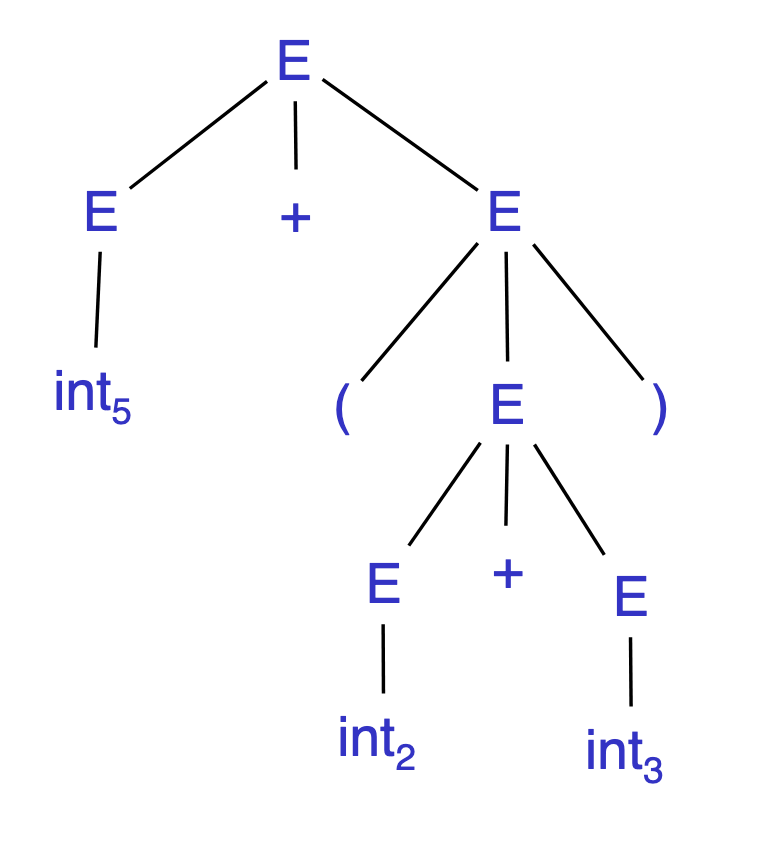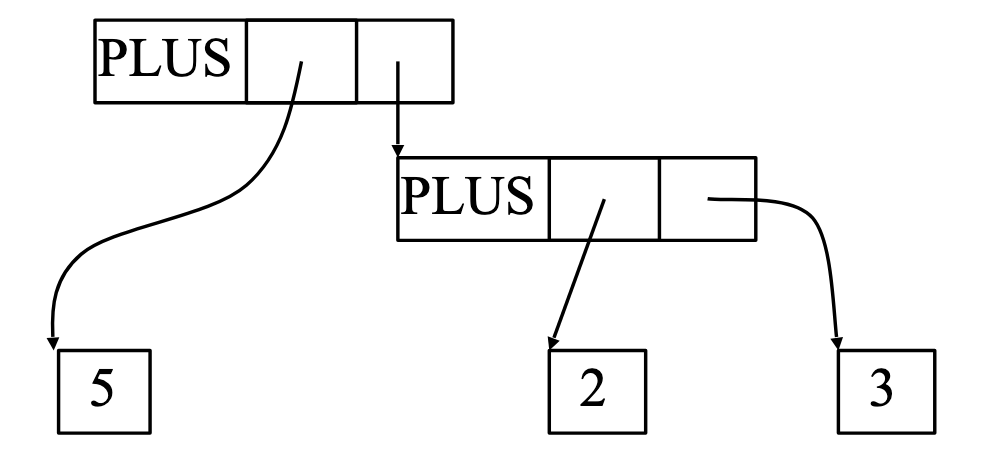abstract syntax tree is what happens when CFGs is applied to text (i.e., the parser traces the AST in time).
Building an AST
Generally, each production will have an action, which is the relevant computation.
X -> Y1... Yn { action }
Each symbol X admits an attribute X.val
- for each terminal,
valis the associated lexeme - for non-terminals,
valis the expression’s value (i.e., from the values of the subexpressions)
you job is to compose the subexpressions’ values and stick it into X.val. Notably, cycles are not allowed because we typically parse bottom-up, left ot right.
actually doing it
For instance, consider:
E -> int { E.ast = mkleaf(int.lexval) }
| E1 + E2 { E.ast = mkplus(E.ast, E2.ast) }
| E.ast = E1.ast
s-attribute
…or synthesized attributes, are calculated from attributes of descendent in the parse tree. For instance, E.val is a synthesized attribute
inherited-attribute, which is rarer, is attributes parsed from teh parent.
declarative vs imperative style
Two parsing ordering styles…
Declarative style
- resolution is not specified
- parser figures it out
Imperative style
- evalution is fixed
- suppose action manipulates global state
an example
Consider the grammar
E -> Int | E + E | (E)
For instance:
E -> int { E.val = int.val }
| E1 + E2 { E.val = E1.val + E2.val }
| ( E1 ) = { E.val = E1.val }
example
E -> int | (E) | E + E
and the string
5 + (2 + 3)
We would draw a tree

and crunch that into a data structure (where exprs can point to other structures.)

